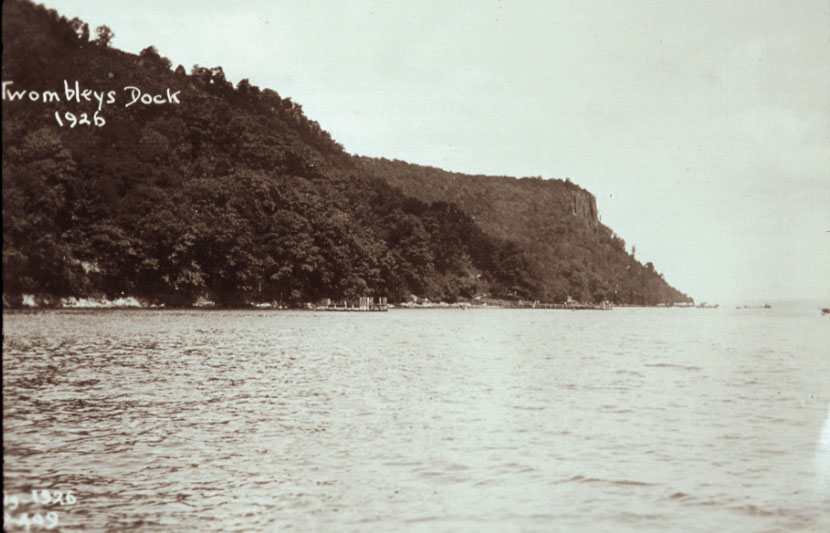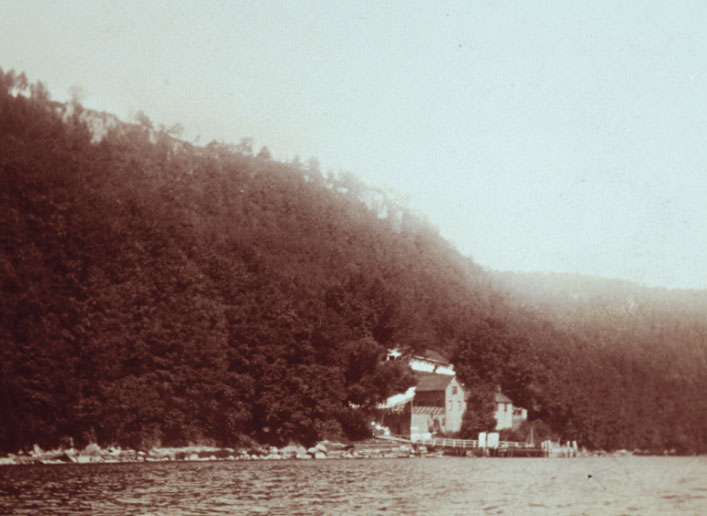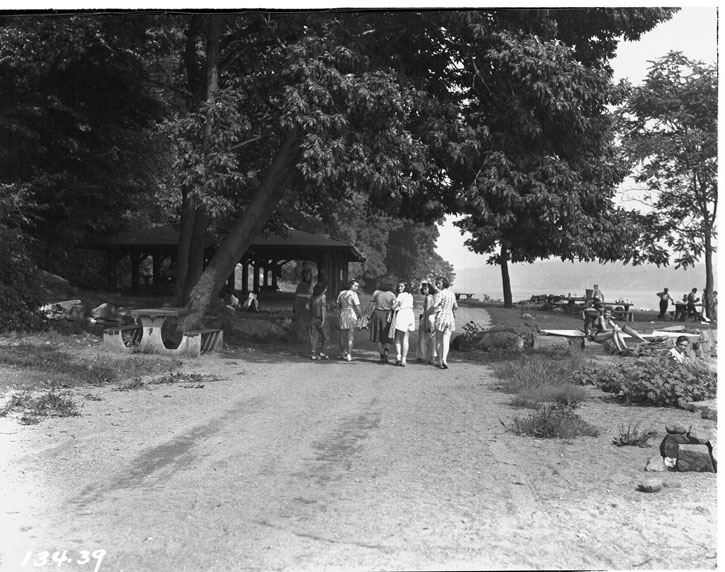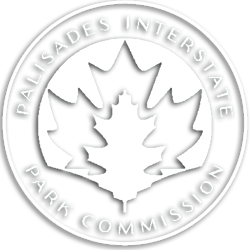“Twombly”
A “Cliff Notes” Story
November 2009
All this year — 2009 — we have reflected back upon the year 1909. We began by considering that year’s “Hudson–Fulton Celebration,” with its weeks of parades and “illuminations” to mark the three-hundredth anniversary of an explorer’s journey up an unknown (to him) river; we discussed the painter Van Dearing Perrine, celebrated in his day as “the Thoreau of the Palisades”; we reminisced about the long-time river folk who still lived along the Palisades: how their timeless world turned fleeting; we contemplated, too, the great changes in the natural order of this “park”; and, finally, we described the September 1909 dedication of the Palisades Interstate Park, recalling some of the words spoken by governors and commissioners on that day.
As we come to the close of this centennial year, there is a loose end still to tie: the story of a gift of land. As Commission President George W. Perkins stated that day in September a century ago: “A donation [was] made last week by Mr. and Mrs. Hamilton McK. Twombly of 60 acres of land and 3,000 feet of riparian rights, which, including docks and improvements, is valued at $125,000. [This gift] makes it possible for the Commission to announce at this time the completion of the task of saving the Palisades…”

“Twombly’s Landing” is still marked on our trail maps, a finger of piled stone that juts into the Hudson along the Shore Trail, about a mile north of Alpine Boat Basin. At high tide it is mostly submerged, like a hundred-and-fifty-foot crocodile; at low tide its stone flanks begin to dry in the sun and wide beaches of coarse-grained sand emerge alongside: good for groups of schoolchildren and scouts to look for sea glass and “devil’s heads” and crab claws. Red bricks, some as worn and rounded as the sea glass the children collect, are scattered along the beaches and in the weeds about the foot of the jetty: clues to what once was here.
Up the steep talus slope and parallel to the Shore Trail is the Upper Trail. There, hikers find a brick-and-stone-lined foundation hole, big enough to have been from a smallish house, an empty socket in the hillside; a freshet trickles across the trail beside it. With the worn bricks below, these are all that is tangible from a “bone factory” that was built here around the time of the Civil War. For several decades after, John Johnson of New York City employed a dozen men and boys, with a forty-horsepower steam engine, to grind animal bones into bone meal to fertilize distant fields. The bones came to Johnson’s docks by the stinking sloop-full from butcher shops, from the dead among New York City’s army of work horses. It was at those very docks that the Twomblys would one day build a “playground.”

In 1877, as Johnson’s factory churned out its bone meal in Alpine, Hamilton McKown Twombly — a twenty-eight-year-old financier, Harvard educated and the son of a millionaire East India merchant — married twenty-three-year-old Florence Vanderbilt, an heiress to grandfather Cornelius “Commodore” Vanderbilt’s hundred-million dollar fortune. The couple would have four children and keep a home on Fifth Avenue, a “cottage” in Newport, and their most famous residence, “Florham” (an amalgam of the couple’s names: Florence and Hamilton) in Morris County, New Jersey. With over a hundred servants and an indoor swimming pool, the grand estate’s manor house boasted Roman tapestries that had once been owned by Louis XIII; the grounds comprised more than a thousand acres — upon which the family parked their private railroad cars. Articles in the “What is Doing in Society” pages of the daily papers recounted their journeys to Europe and the soirees they hosted for powerful friends. Yet the rarefied social sphere they inhabited could not shield the Twomblys from personal tragedy. In 1896, as Florham was just nearing completion, their oldest daughter, Alice, sixteen years old, died of pneumonia.
It was also around this time that the Twomblys bought dozens of acres beneath the Palisades, including the now-defunct Johnson’s bone factory and its docks and works. Taking their cue from another nineteenth-century waterfront use — the “excursion groves” that had cropped up on Long Island Sound, on the Jersey Shore, along the Hudson and its Palisades — they transformed the site into a place for people to escape the heat and squalor of the city. The bone factory’s buildings were torn down, its rusting machinery removed. Pavilions were built, playing fields cleared.
There was no Interstate Park Commission as the Twomblys created their playground. Quarries still blasted away at vast sections of the cliffs. The preservation of the Palisades as parkland seemed a dim dream at best; it would be several contentious years before the states of New Jersey and New York, in 1900, would at last be persuaded to come together for that purpose, the better part of a decade to close the quarries and acquire the land. All that time — largely unnoticed by the politicians and power brokers who were debating the fate of the Palisades — thousands, most of them from among New York City’s poor, were coming to Twombly’s Landing for a little fresh air and some fun. Here again is George Perkins at the park’s 1909 dedication: “During the past thirteen years [the Twomblys] have maintained a dock and comfortable recreation grounds, and the excursions have been run from the city for people who could not afford the outing themselves. During the past 13 years 365,000 people from the city have enjoyed the benefits of a ride up the Hudson, a few hours at this charming landing, and a ride back to New York.”
By deed agreement, the Park Commission continued to operate Twombly’s Landing for disadvantaged groups from the City, whether from churches or orphanages or organizations like the Fresh Air Fund, maintaining the pavilions and docks, putting fresh packed sand on the tennis courts there. After World War Two and the growth of the automobile culture of the modern suburbs, the Palisades “excursion groves” became memories: Excelsior Park, Occidental Grove, Alpine Grove, Forest View. Twombly’s.


As for Hamilton and Florence Twombly, in 1905 their only son, Hamilton Jr., apple of his father’s eye, drowned; he was eighteen. Hamilton Sr., they said, never recovered: an article covering his death in 1910 — five years after his son’s — listed its cause as “cancer and a broken heart.” Florence found the means to carry on, keeping to her active social life even after losing two children and her husband and, in 1915, seeing part of Florham destroyed by fire. She moved to Paris in her later years, where she died in 1952. Parts of Florham were bought by Esso (later Exxon) and Fairleigh Dickinson University; many of its surviving buildings became part of an FDU campus — in a town that would take half its name from the grand estate: Florham Park, New Jersey.
– Eric Nelsen & Lindsey Foschini-Stabile –

